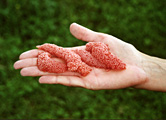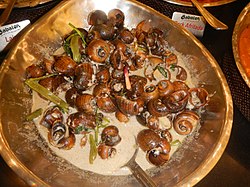Non-indigenous distribution
This species also occurs in the United States, where the initial introductions were probably from aquarium release, aka "aquarium dumping". The non-indigenous distribution includes: Lake Wawasee in Kosciusko County, Indiana; [7] Langan Park and Three Mile Creek in Mobile, Alabama; [8] [9] a pond bordering the Mobile-Tensaw River Delta in Baldwin County, Alabama; [9] Little Wekiva River, Orlando, Florida; a lake near Jacksonville, Florida; [10] Miramar Reservoir in San Diego County, California; and a pond near Yuma, Arizona. Established populations exist in California and Hawaii. [11]
Moving North, the Government of Alberta has labelled channeled apple snails as an invasive species. [12] Alberta's Minister of Environment and Protected Areas Rebecca Schulz, alongside the Alberta Invasive Species Council, is working hard to make Alberta invasive species free, which includes addressing the issue of channeled apple snails.
The species has been found in China since 1981. [13] Its initial point of distribution in China was Zhongshan city. [14]
The species has been found in Chile since 2009 with a restricted distribution. [15]
The species has also been found in the Philippines, Japan, Korea, Taiwan, Vietnam, Cambodia, Laos, Papua New Guinea, parts of Indonesia and Malaysia, Singapore, and Guam. In 1980, the apple snail was introduced to south-east Asia as a food item and aquarium pet. First, it was introduced to Taiwan, then Japan, then Thailand and the Philippines. Instead of catching on, snails were released or escaped and have become a major agricultural pest. [16]
Samples taken 3 December 2020 in Mwea Constituency, Kirinyaga County, Kenya were the first in that country, and indeed the first in continental Africa. [17]








